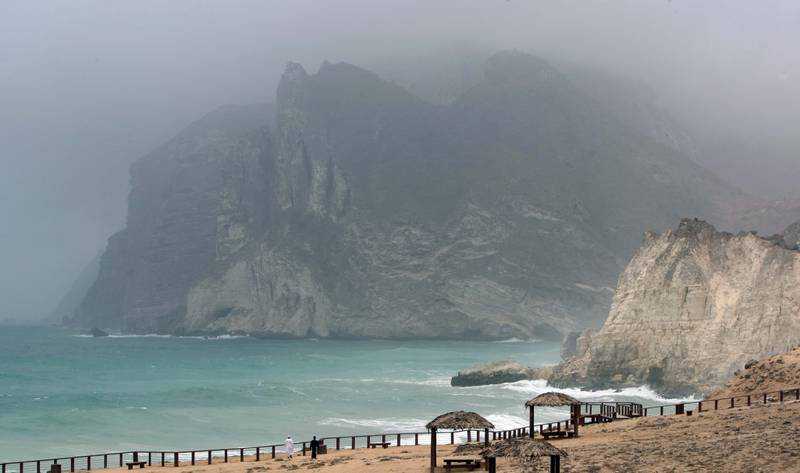Oman approves 2022 budget with spending at $31.5bn

Oman has approved its annual budget for 2022, allocating 12.13 billion Omani riyals ($31.5bn) for spending, with a focus on basic public services, from health to social support, stimulating investment.
This year's budget, which is an increase on the previous year's budget of 12.167bn riyals, is based on an oil price assumption of $50 per barrel, the state-run Oman News Agency (ONA) reported on Sunday.
The government expects its revenue to reach 10.58bn riyals in 2022, with more than half (68 per cent) coming from oil and gas revenue of 7.24bn riyals, ONA reported. Non-oil revenue is estimated to reach 3.34bn riyals, or 32 per cent of total government revenue.
Oman's budget deficit in 2022 is expected to reach an estimated 1.5bn riyals, or 5 per cent of gross domestic product, with the estimated deficit in line with the country's medium-term financial plan, launched by the Gulf state last year to fix its finances.
The sultanate will finance its budget deficit from external and domestic borrowing, as well as plugging the remaining gap through drawing on its reserves.
“The draft budget for 2022 has been prepared in line with the objectives and pillars of the 10th Five-Year Plan from 2021 to 2025,” Sultan bin Salem Al Habsi, Oman's finance minister, told ONA. “This represents the first phase within Oman Vision 2040 that is aimed at achieving financial sustainability and stimulating economic diversification.”
Oman's budget deficit reached an estimated 1.2bn riyals in 2021, or 3.8 per cent of GDP. “Preliminary data indicate that the state’s general budget for 2021 is heading towards achieving the lowest annual deficit since 2014, despite the fluctuation in oil prices during previous periods,” Mr Al Habsi said, citing government efforts to boost the confidence of lenders and credit rating agencies.
In a preliminary 2022 budget report on December 30, Oman's Ministry of Finance said the priorities for spending will be on basic services such as education, health, housing and social care, improving the business environment and attracting more investments.
Oman, a relatively small crude producer compared to its Gulf neighbours, is more sensitive to oil price swings. However, higher oil prices in 2021, along with fiscal reforms, are expected to narrow government deficits and contain debt levels over the next few years.
Last month, Fitch Ratings revised Oman’s outlook to stable from negative following improvements in key fiscal metrics, including government debt, GDP and the budget deficit.
The agency also affirmed the sovereign's long-term foreign and local currency Issuer Default Ratings (IDR) at BB minus. The BB ratings indicate an elevated vulnerability to default risk, particularly in the event of adverse changes in business or economic conditions over time, with financial flexibility still in place.
The revision in Oman's outlook was driven by higher oil prices and fiscal reforms in the country and a lessening of external financing pressures relative to recent years, even as external funding needs remain high, Fitch said.
Oman has adopted various fiscal measures over the past year to support the economy during the pandemic, including interest-free emergency loans, tax and fee reductions and waivers, the flexibility to pay taxes in instalments and a Job Security Fund to support citizens who lost their jobs.
Oman's economy is set to recover in 2021 from the dual impact of the Covid-19 pandemic and the collapse in oil prices in 2020, with the economy projected to grow by 2.5 per cent after a contraction of 2.8 per cent in 2020, according to the International Monetary Fund.
Tags :
Previous Story
- Sheikh Mohammed bin Rashid approves $49.3bn Dubai budget...
- Asia looks to China-focused RCEP trade bloc as...
- Energy prices: Government must show more urgency, says...
- Hong Kong retailers forge new path without mainland...
- COVID-19 variant disrupts holiday travel but not shopping...
- Drivers playing video games? U.S. is looking into...
- Philippine companies' confidence back at pre-Covid levels, but...
- Oil at $100 a barrel is possible as...